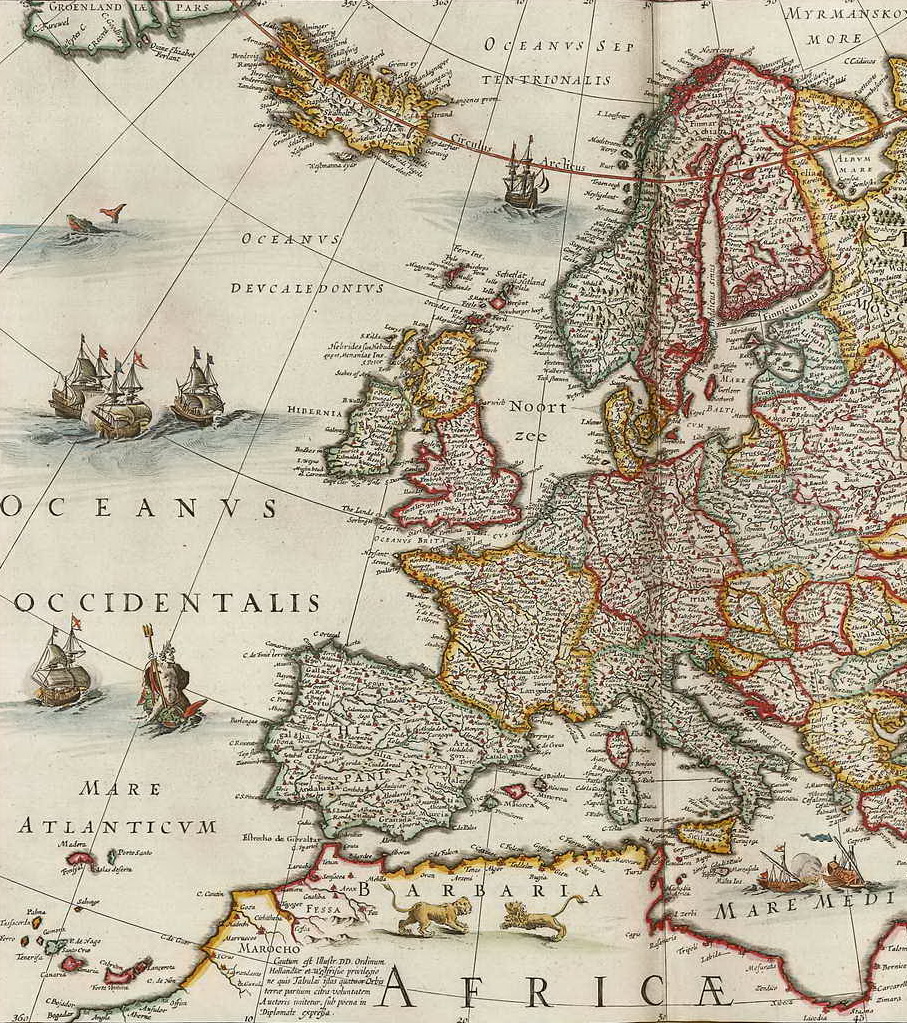Joan Blaeus’ Great Atlas
The Atlas Maior provides a good overview of geographical knowledge in the mid-17th century. Although in some cases more current or better information was available, the Atlas Maior was in many cases the only available source due to its wide distribution and broad scope.
Pieter van der Krogt, Der Atlas maior von Joan Blaeu, 2005
The Atlas Maior was first published by the Amsterdam publisher Joan Blaeu in 1659. It consists of approximately 600 maps. Blaeu's intention was to publish, in addition to the geographical atlas, a cosmological atlas and a nautical atlas. This never came to fruition however. Nevertheless, the Atlas Maior is the greatest cartographical work of its time, a comprehensive compilation of newly created and existing maps going back over a period of about 100 years. All maps are copperplate engravings and some of them were already coloured by the publisher. There are Dutch, Latin, French, Spanish and German editions. The engraved maps were used in all editions but the pages containing text were published in their respective languages.
Depending on the edition, the atlas consists of between nine and twelve volumes. Each edition has around 5,000 pages of text. The circulation figures are estimated to be between 200 and 650 copies per edition. Around 950,000 engravings and 544,000 pages of text were printed for 16,650 volumes – a feat that Blaeu achieved in his own printing shop with nine letterpresses and six copperplate printing presses. Blaeu also owned second printing shop that later burned down. For this reason, there were no reprints of the Atlas Major after 1672. This volume of the coloured atlas cost about 450 florins; uncoloured copies were about 100 guilders less expensive. As a comparison: At that time, you could pay the annual rent of a bookstore in Amsterdam with 400 to 700 guilders. In the Deutsches Buch- und Schriftmuseum there is a copy of the Dutch edition (Grooten Atlas) with a supralibros that shows it once belonged to the van Reijgersberg family.

